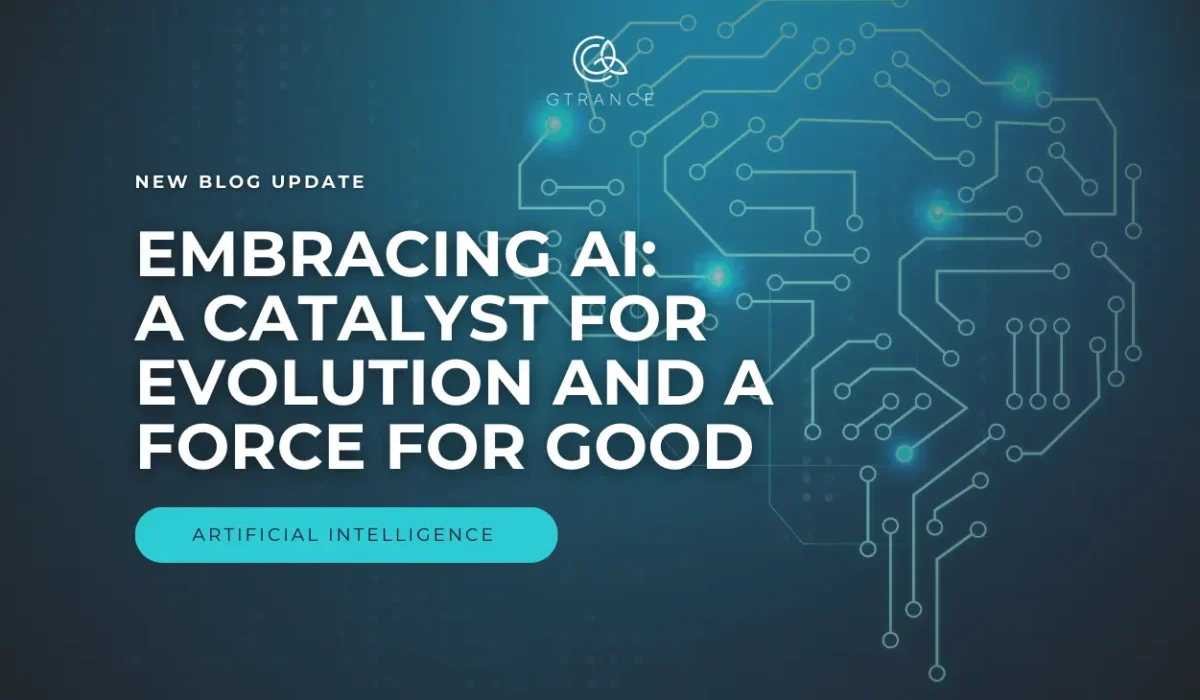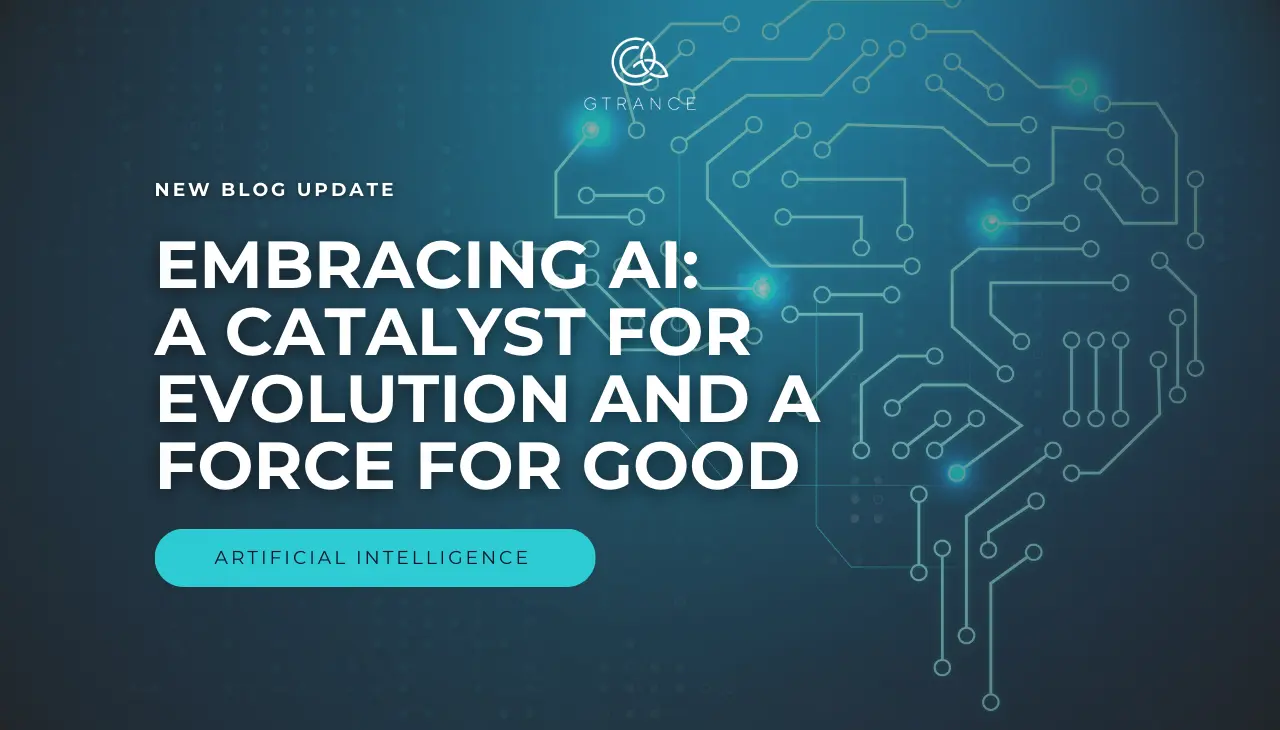
Artificial Intelligence (AI) is no longer just the stuff of science fiction. It has become an integral part of our lives, revolutionizing industries, reshaping societal norms, and redefining how we interact with technology. From autonomous vehicles and personalized medicine to smart assistants and predictive analytics, AI is shaping the present and paving the way for an extraordinary future. Rather than resisting its rise, humanity stands to benefit immensely by understanding, adapting to, and leveraging AI responsibly.
AI: A Transformative Force
AI’s capabilities stem from its ability to process vast amounts of data, recognize patterns, and make decisions at a scale and speed beyond human reach. Its influence spans diverse fields:
- Healthcare: AI-driven tools are transforming diagnostics, drug discovery, and personalized treatments. Algorithms can analyze medical data to predict diseases, recommend treatments, and even perform robotic surgeries with precision.
- Education: Adaptive learning platforms use AI to customize lessons, helping students learn at their own pace and style.
- Business and Industry: AI automates repetitive tasks, enhances decision-making through predictive analytics, and drives innovation in areas like logistics, finance, and manufacturing.
- Sustainability: AI models help combat climate change by optimizing energy use, predicting natural disasters, and improving conservation efforts.
AI as a Step in Human Evolution
AI is more than just a tool; it represents a significant evolutionary leap. Historically, humanity’s greatest advancements came from innovations that expanded our capabilities: the wheel, the printing press, electricity, and the internet. AI is the next frontier, acting as an extension of human intelligence.
- Amplifying Human Potential: AI does not replace human creativity and ingenuity; it enhances them. It allows us to solve complex problems faster and more effectively.
- Breaking Barriers: AI transcends human limitations, from processing massive datasets to making real-time decisions in dynamic environments.
- Catalyzing Collaboration: AI advances global collaboration by connecting people, ideas, and resources across borders in unprecedented ways.
Making the Best Use of AI
Rather than fearing AI, the focus should be on integrating it thoughtfully and ethically. Here’s how we can make the most of this powerful technology:
- Education and Skill Development:Equip people with the knowledge and skills to work alongside AI.Emphasize STEM (Science, Technology, Engineering, and Math) education while also fostering creativity and ethical reasoning
- Ethical Development and Governance:Prioritize transparency, accountability, and fairness in AI development.Establish robust policies to prevent misuse, such as bias in algorithms or misuse in surveillance.
- Human-Centric Design:Focus on designing AI systems that enhance human well-being, rather than replace or exploit.Ensure accessibility and inclusiveness in AI tools, so benefits reach all communities.
- Collaboration Over Competition:Encourage public-private partnerships and global cooperation to address shared challenges, from pandemics to climate change.
- Adapt and Innovate:Embrace AI as a partner in creativity, from generating art and music to assisting in research and invention.Stay open to the new possibilities AI can bring to fields like philosophy, ethics, and the arts.
The Future of AI
The future of AI is as promising as it is challenging. Emerging technologies such as Generative/Agentic AI, Quantum Computing, and Autonomous Systems will expand AI’s capabilities further. However, as these advancements unfold, humanity must balance progress with responsibility.
- Augmenting Daily Life: AI will continue to make life more convenient and efficient, with smart homes, autonomous transportation, and personalized healthcare becoming mainstream.
- Solving Global Challenges: AI has the potential to tackle issues like poverty, disease, and environmental degradation through innovation and resource optimization.
- Expanding Human Understanding: AI will assist in unraveling complex questions in science, space exploration, and even the nature of consciousness.
AI: A Call to Action
Instead of fearing AI, we should view it as an opportunity to redefine what it means to be human. The integration of AI into society is an evolutionary milestone, offering tools to amplify our creativity, solve our greatest challenges, and create a future where technology works in harmony with humanity.
By embracing this transformative technology with responsibility, foresight, and collaboration, we can unlock its vast potential and ensure it serves as a catalyst for a brighter, more equitable world. The question is not whether AI will shape the future but how we, as stewards of this remarkable innovation, will shape AI.
AI and Emotional Intelligence: A Symbiotic Relationship
One of the most exciting frontiers of Artificial Intelligence (AI) lies in its ability to work in tandem with Emotional Intelligence (EI). While AI excels at processing data and recognizing patterns, Emotional Intelligence centers on understanding, managing, and influencing human emotions. Together, these two forces create a dynamic synergy that not only enhances AI’s capabilities but also deepens its integration into human lives in a meaningful way.
As a Neuro-Linguistic Programming (NLP) expert, I can confidently assert that the foundation of human connection and communication lies in understanding patterns, both verbal and nonverbal. AI, when infused with Emotional Intelligence, aligns beautifully with the core principles of NLP, offering opportunities to elevate how we connect, communicate, and transform our personal and professional interactions.
AI and Emotional Intelligence: A Natural Alignment
Emotional Intelligence enables humans to build rapport, navigate social dynamics, and empathize with others. These traits are increasingly being programmed into AI systems through advanced techniques like Natural Language Processing, sentiment analysis, and machine learning. Here’s how this relationship plays out:
- Enhancing Human-AI Communication:
Through voice recognition and NLP, AI systems can detect tone, context, and intent, mimicking the empathetic listening skills essential to human communication.For example, virtual assistants and customer service chatbots equipped with emotional recognition can adapt their responses based on the user’s emotional state, improving user satisfaction and trust. - Empowering Personal Growth:
Just as NLP techniques focus on reprogramming negative thought patterns, AI can assist individuals in developing self-awareness and emotional management.AI-powered mental health apps, such as those offering guided meditation or cognitive behavioral therapy (CBT), use NLP to help users reshape their internal dialogue and manage stress. - Driving Collaboration and Empathy:
In professional settings, AI tools can analyze team dynamics, identify communication bottlenecks, and suggest strategies for fostering collaboration.For leaders trained in NLP, integrating emotionally intelligent AI can amplify their ability to motivate, influence, and inspire teams.
The Intersection of NLP and AI
Neuro-Linguistic Programming and AI share a common goal: understanding and modeling patterns to achieve desired outcomes. Let’s explore their interplay:
- Pattern Recognition and Modeling:
NLP focuses on understanding how humans encode experiences and replicate successful strategies in behavior and communication. Similarly, AI algorithms are designed to recognize and replicate patterns in data, speech, and behavior.For instance, AI-powered coaching platforms can use NLP principles to guide individuals in overcoming limiting beliefs by identifying linguistic patterns in their speech. - Rapport Building Through AI:
One of the key tenets of NLP is building rapport by mirroring language, tone, and body language. AI systems trained in emotional recognition can replicate this by adapting their responses to align with the user’s communication style.This creates a more natural and engaging interaction, bridging the gap between human and machine. - Transformative Change at Scale:
NLP practitioners often use techniques like reframing and anchoring to help individuals rewire their emotional responses. AI can amplify this by delivering personalized tools, such as real-time feedback or scenario-based simulations, to scale transformative changes for individuals and organizations.
How AI and EI Shape the Future Together
By combining AI’s computational power with Emotional Intelligence and the insights of NLP, we can design systems that are not just efficient but also human-centric and deeply empathetic. This evolution holds profound implications:
- AI as a Mirror for Self-Reflection:
Just as Neuro-Linguistic Programming teaches us to become more aware of our thought and language patterns, emotionally intelligent AI can act as a mirror, helping users identify emotional triggers and refine their communication styles.For example, AI systems can offer real-time feedback on how one’s tone or choice of words might affect others, creating opportunities for growth in Emotional Intelligence. - Elevating Human-AI Collaboration:
Emotionally intelligent AI systems can serve as co-creators, brainstorming partners, or mediators, making professional and personal collaboration smoother.Neuro-Linguistic Programming principles like chunking (breaking tasks into manageable parts) can be integrated into AI design to help users achieve clarity and focus. - Bridging Cultural and Emotional Divides:
Neuro-Linguistic Programming emphasizes the importance of understanding others’ perspectives. AI, with its ability to process diverse datasets, can foster cross-cultural understanding by adapting to different emotional and linguistic norms, promoting inclusivity on a global scale.
Using AI and Neuro-Linguistic Programming to Create a Better World
Rather than viewing AI as a threat to humanity’s emotional depth, it’s vital to see it as an ally in elevating our collective intelligence. By integrating AI’s capabilities with the principles of Neuro-Linguistic Programming and Emotional Intelligence, we can create technologies that:
- Empower individuals to lead more fulfilling lives by overcoming emotional barriers.
- Enhance relationships by improving communication and understanding.
- Solve global challenges through collaboration and innovation.
Just as NLP teaches us that “the map is not the territory,” AI reminds us that while technology is a tool, its true potential lies in how we use it. By embracing this partnership between AI and Emotional Intelligence, humanity can take an evolutionary leap toward a future that is not just technologically advanced but emotionally enriched and deeply connected.
©2025 Grace El Tayar
